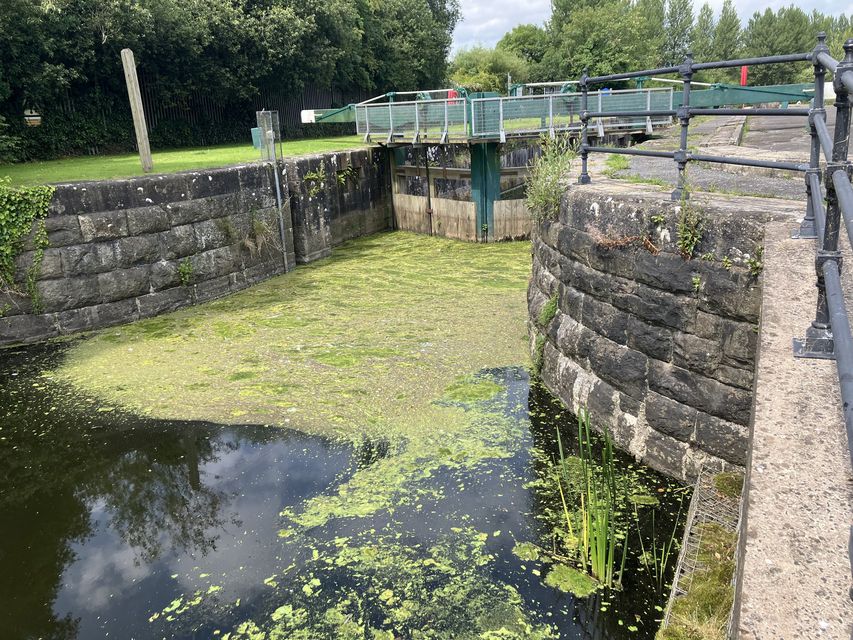A review of pollution penalties, targeted inspections and a research initiative to investigate solutions to the algae problem are among the proposals in a 37-point Lough Neagh Action Plan approved by the NI Executive.
Stormont ministers gave the plan the green light on Thursday as controversy over the return of blue-green algal blooms to Lough Neagh resurfaced following the recent period of warm weather.
The blooms of cyanobacteria are exacerbated by excess nutrient content in the water from agricultural and waste run-off, combined with rising temperatures and periods of wet weather.
Read more
Environment Minister Andrew Muir had developed the action plan in order to deal with the environmental issues at the Lough and had been waiting on sign-off from the Executive on 17 of the 37 actions.
Among the actions is a commitment to a “streamlined and more effective penalty regime” to act as a deterrent against pollution incidents, which are understood to contribute highly to the issues facing the Lough.
Mr Muir said earlier this year he intended to reverse a decision taken by his predecessor Edwin Poots to cap penalties for agricultural pollution at 15% for repeat offences.
A small business research initiative to investigate feasible and affordable solutions to reduce blue green algae blooms when they occur is also included in the plan.
The document is grouped into five phases; education, incentivisation/innovation/investment, regulation, enforcement and science and governance.
Pic: Pacemaker Belfast
Within the education section, the plan details monthly outreach events to farm businesses within the Lough’s catchment and the development of a Lough Neagh science platform to provide near-real time water quality and safety monitoring data.
A simplified information system for slurry spreading is also among the plans, as well as exploring a Conservation Management Plan for the Lough to inform the restoration of the ecosystem.
The action plan will also investigate the most effective domestic wastewater treatment systems with the potential to expand to a septic tank replacement scheme.
A community challenge fund to link in with the existing “Live Here, Love Here” scheme will be explored, while DAERA will bid for a new grant programme to support organisations working to improve water quality and conservation of Lough Neagh.
In terms of regulation, a consultation will be held on restricting the use of chemical fertilisers containing phosphorous on grassland, while a fertiliser database will be introduced to record fertiliser movements along NI’s supply chain.
A Department group will develop a proposed response to the excess nutrient problem in an attempt to reduce the amount of phosphorous loading to land.
There will be increased activity focused in the areas of highest risk, with the view to developing a focused enforcement taskforce, while additional water inspectors will be provided to enhance responses to water pollution.
An enforcement project team will consult on enforcement methods, including fixed penalty notices for non-compliance, while a review of fines and penalties will also take place in consultation with the Department of Justice.
A dedicated team, working separately from the NIEA will work alongside stakeholders to support farm businesses in improving water quality, with a view to introducing a “streamlined and more effective” penalty regime as a deterrent to pollution.
Under science and governance, the plan will introduce a Lough Neagh Science Platform to provide evidence that will inform policy and decision making, while a scientific review of the environmental impact of sand extraction will also be commenced.
The final point in the plan will see the InterAgency Blue-Green Algae monitoring protocol implemented for response to incidents and public health advice.
